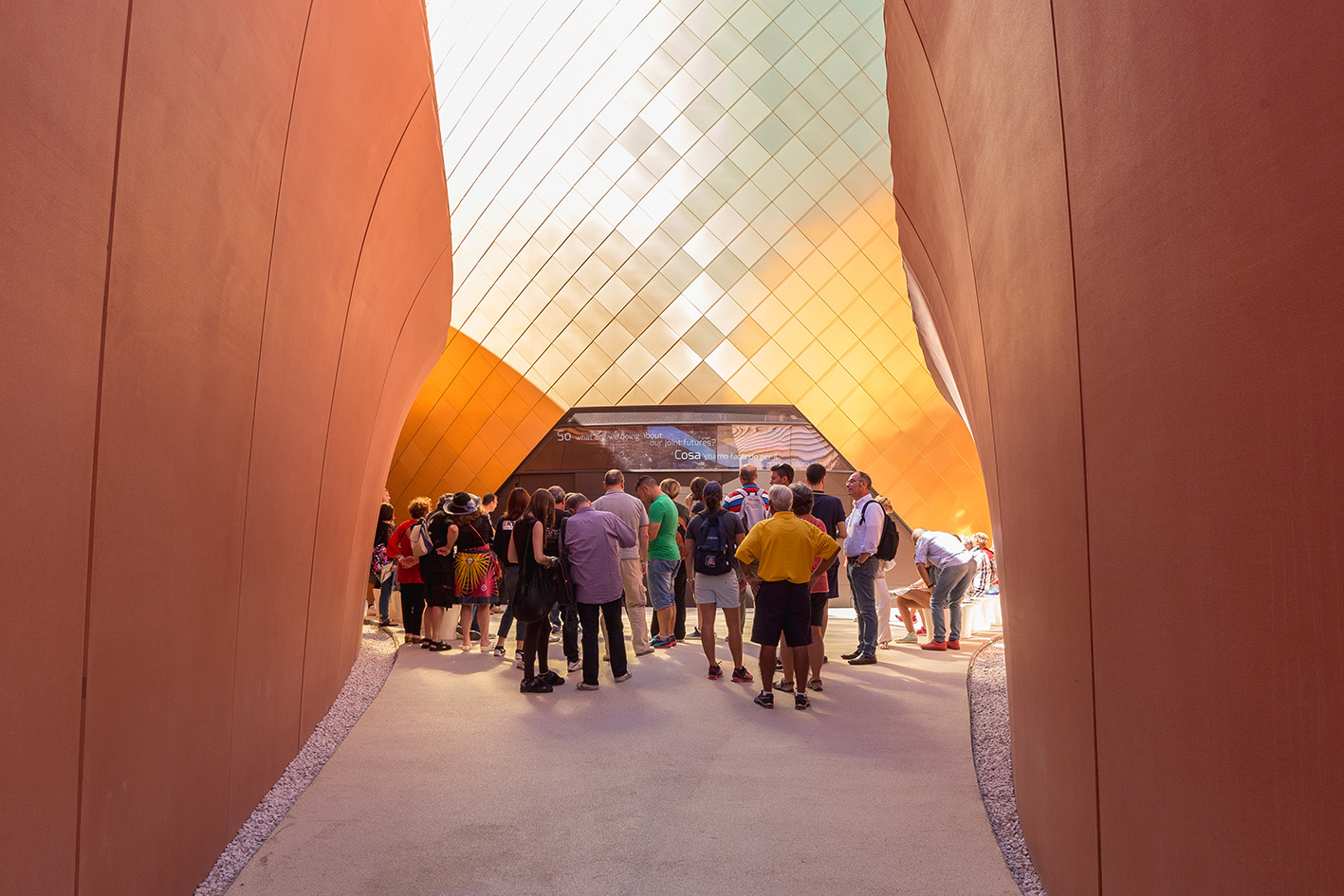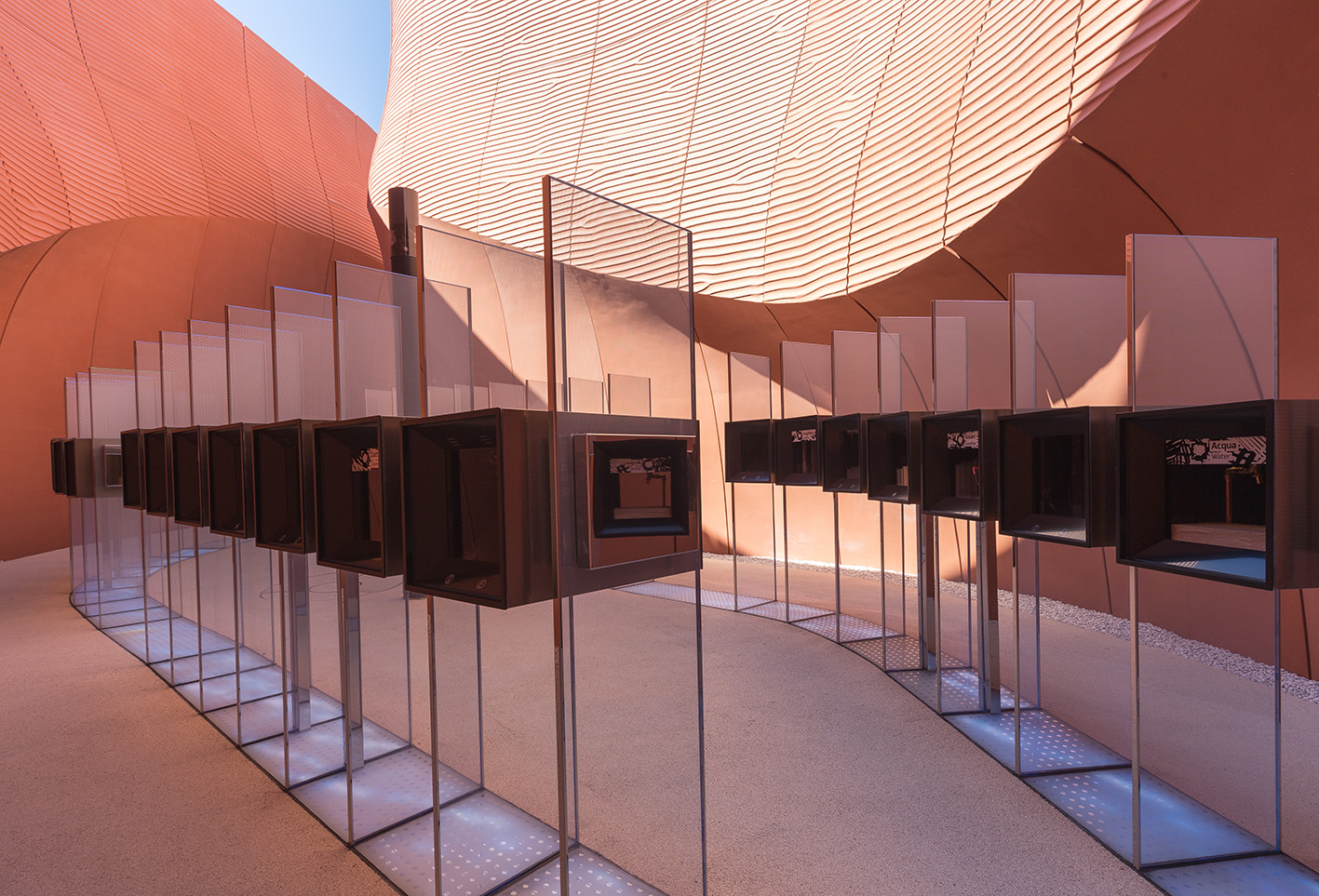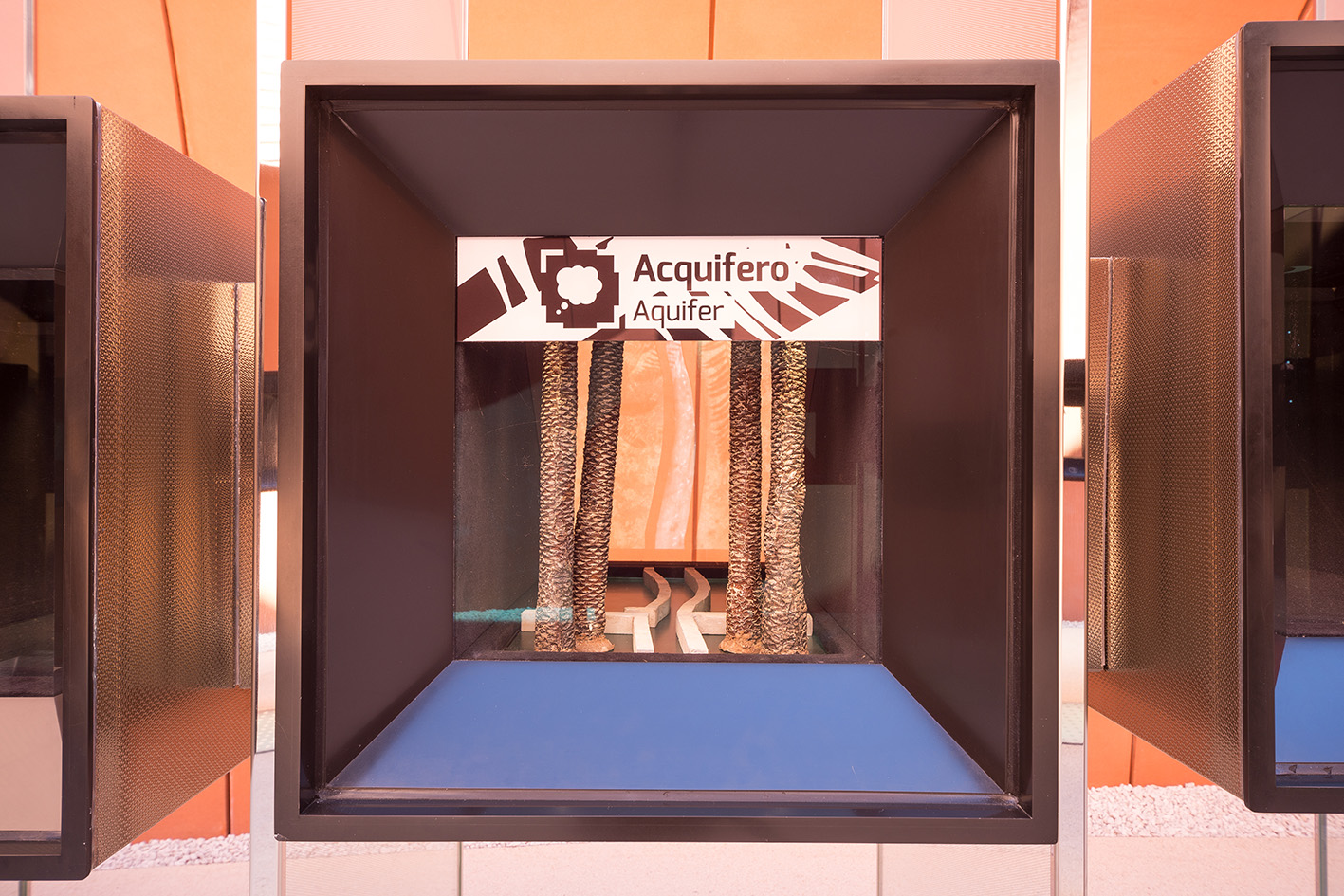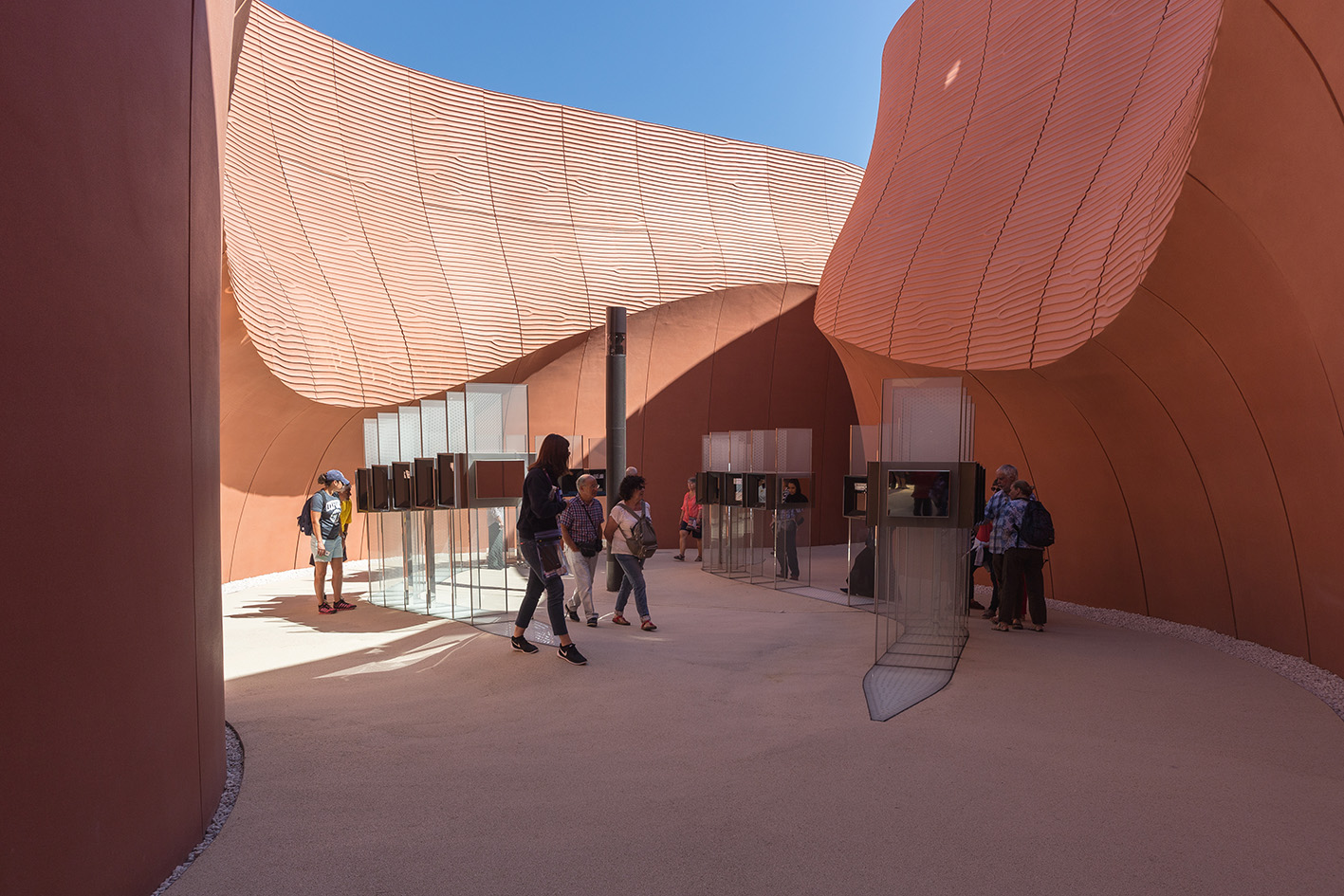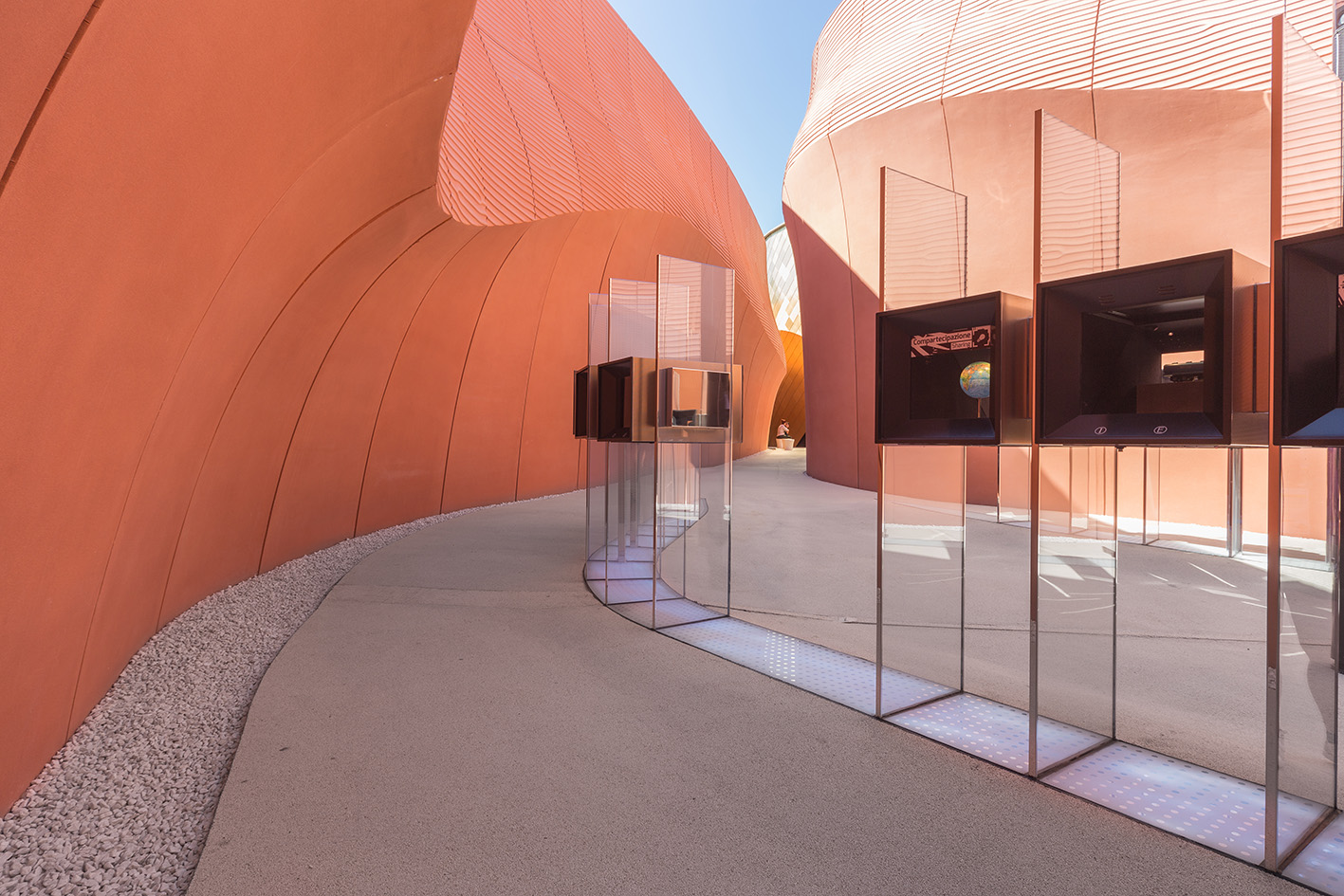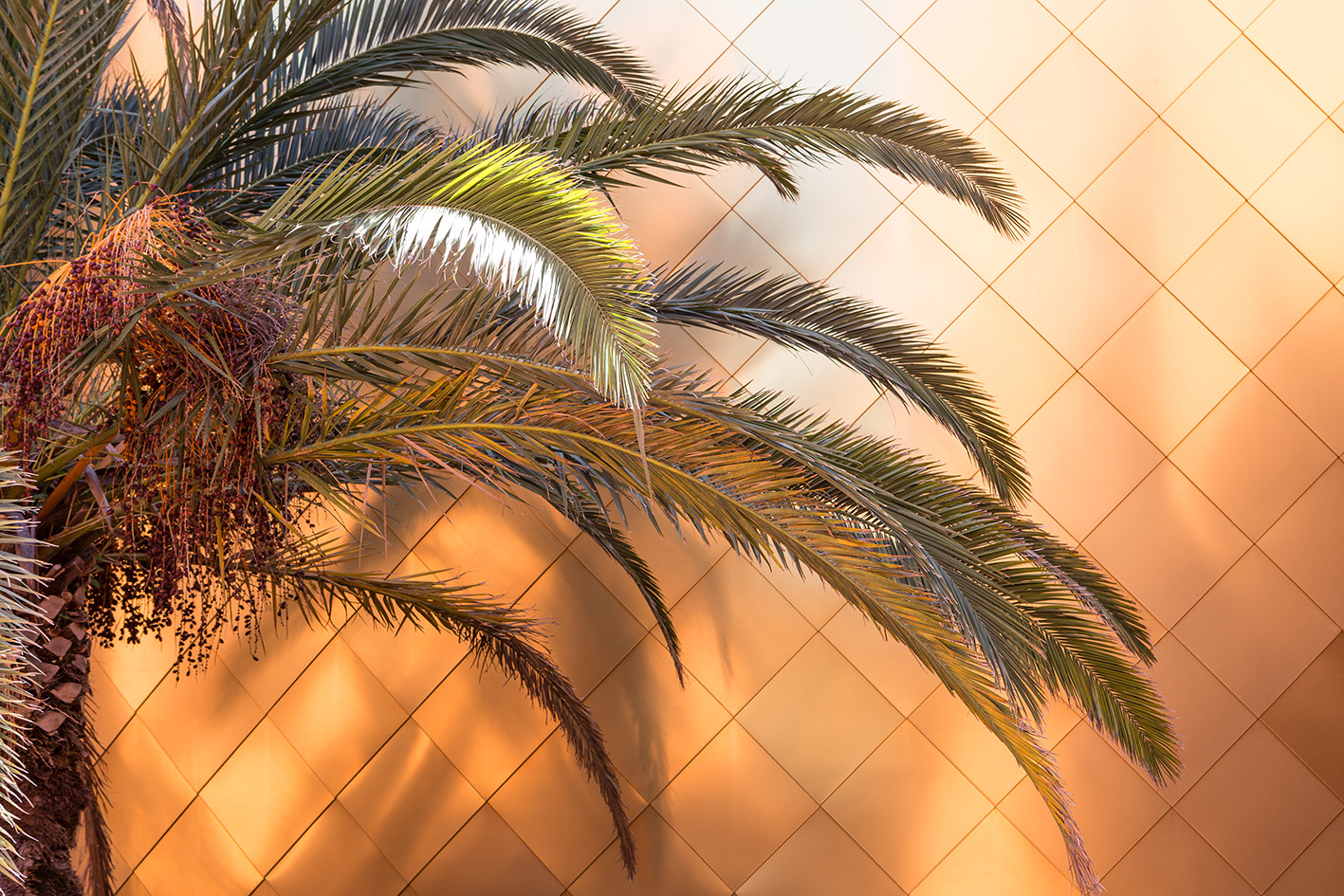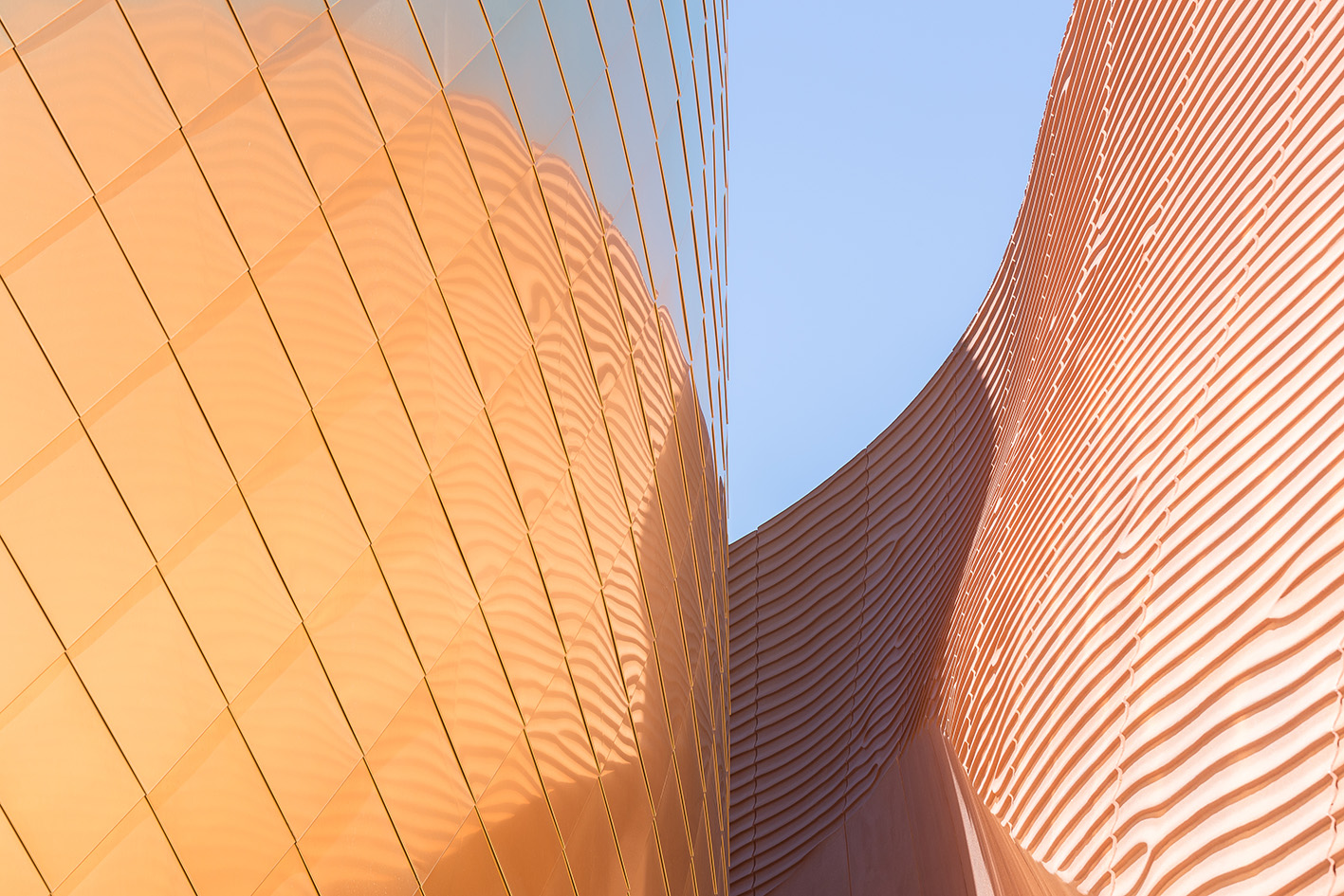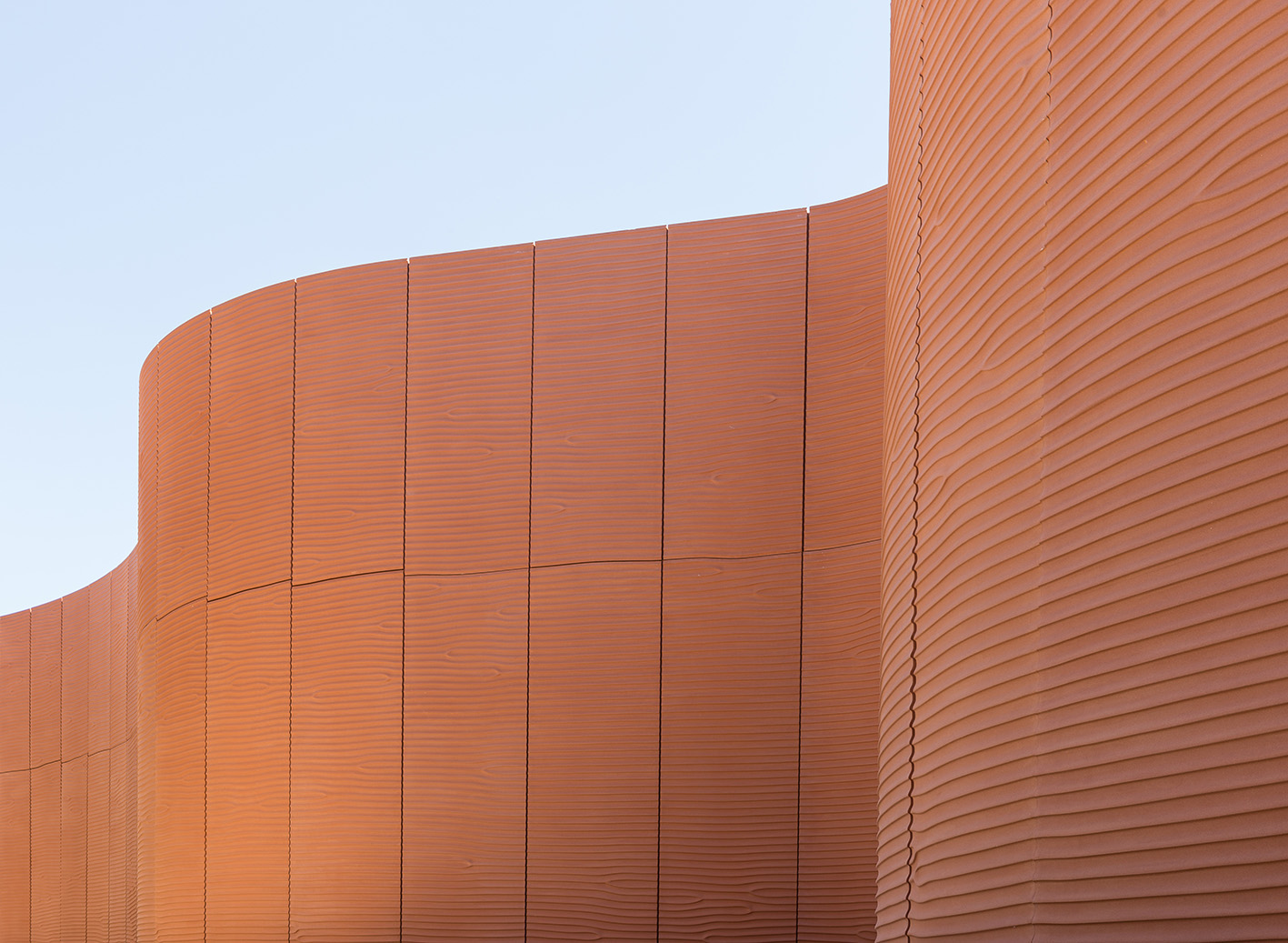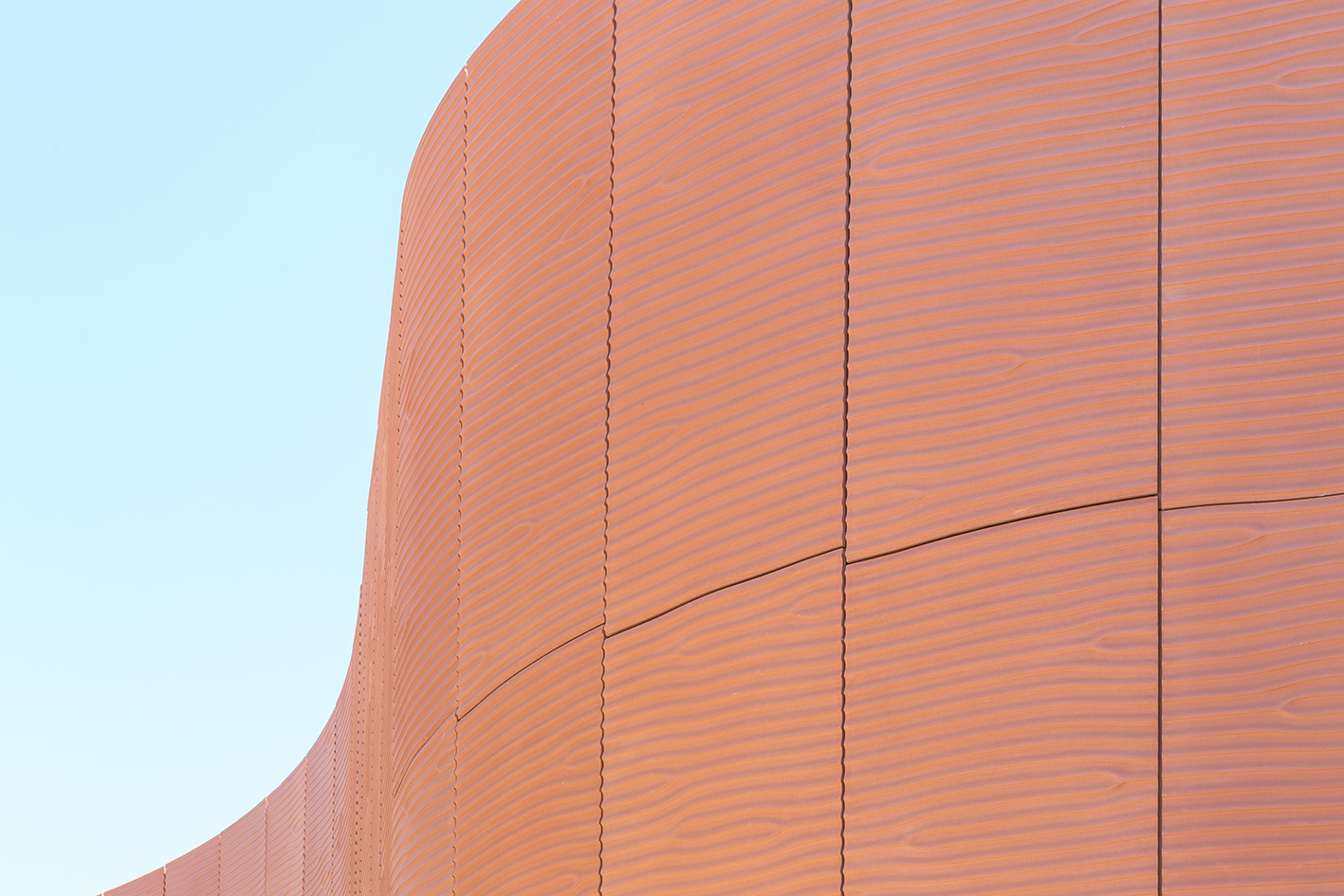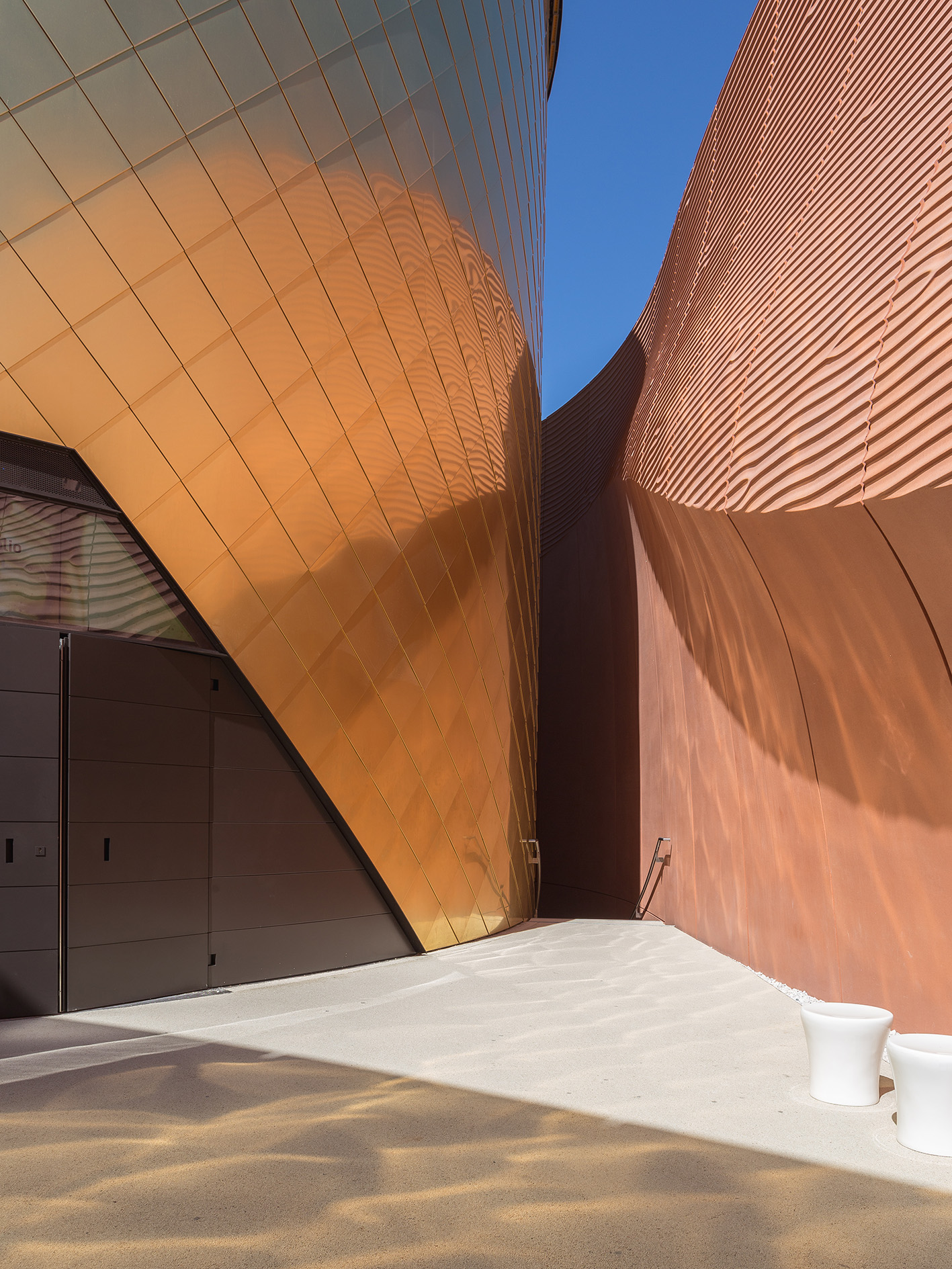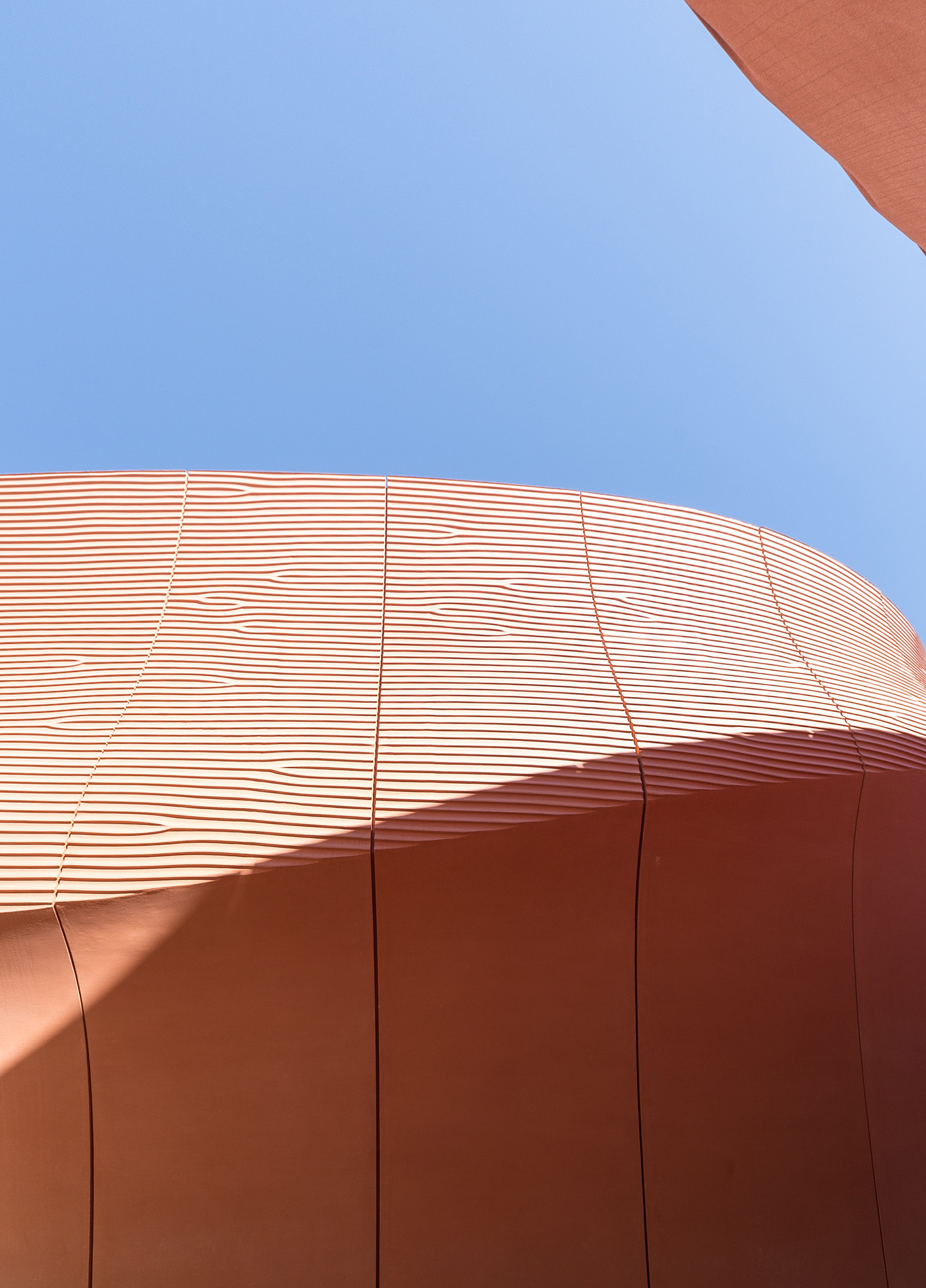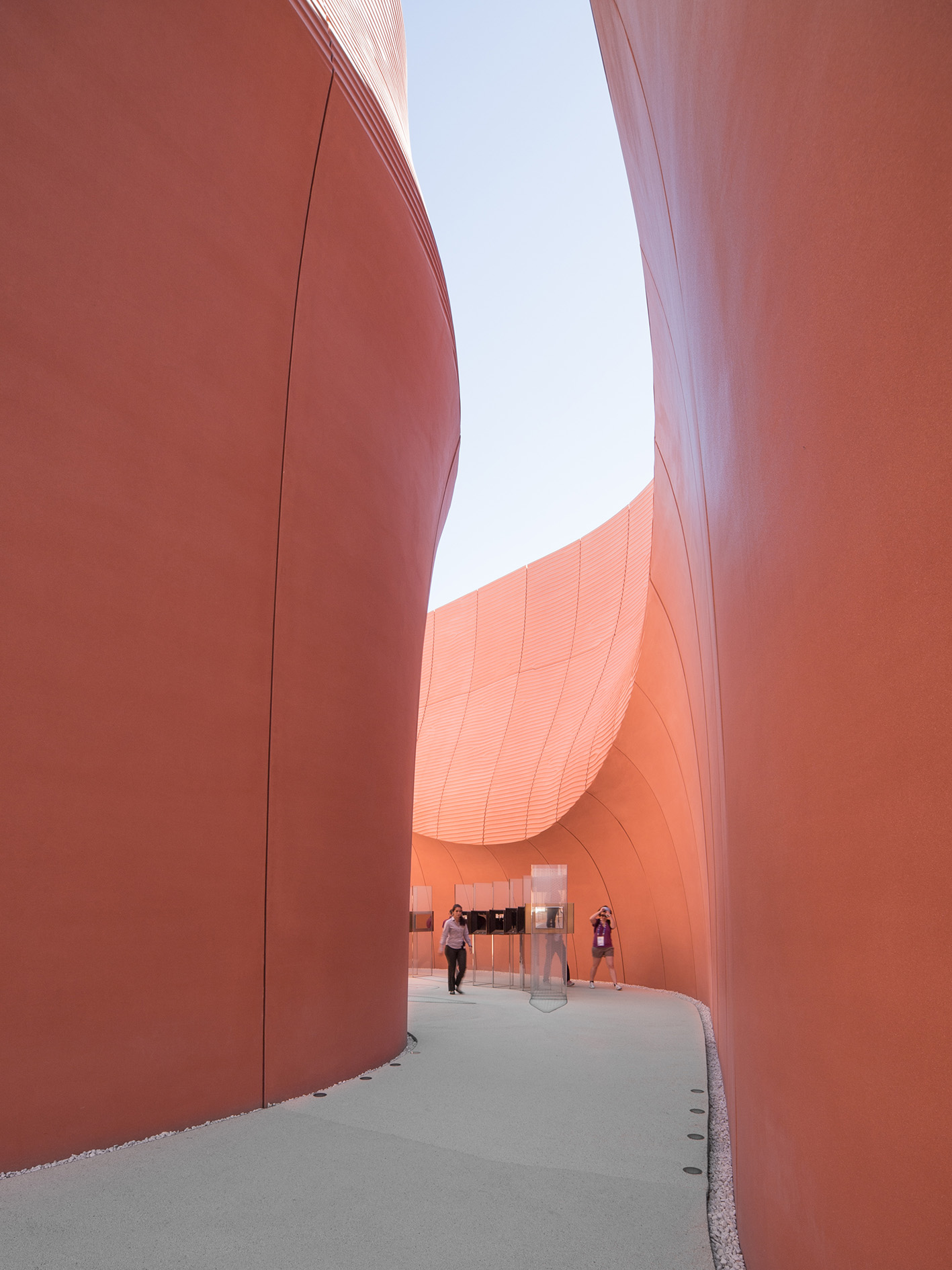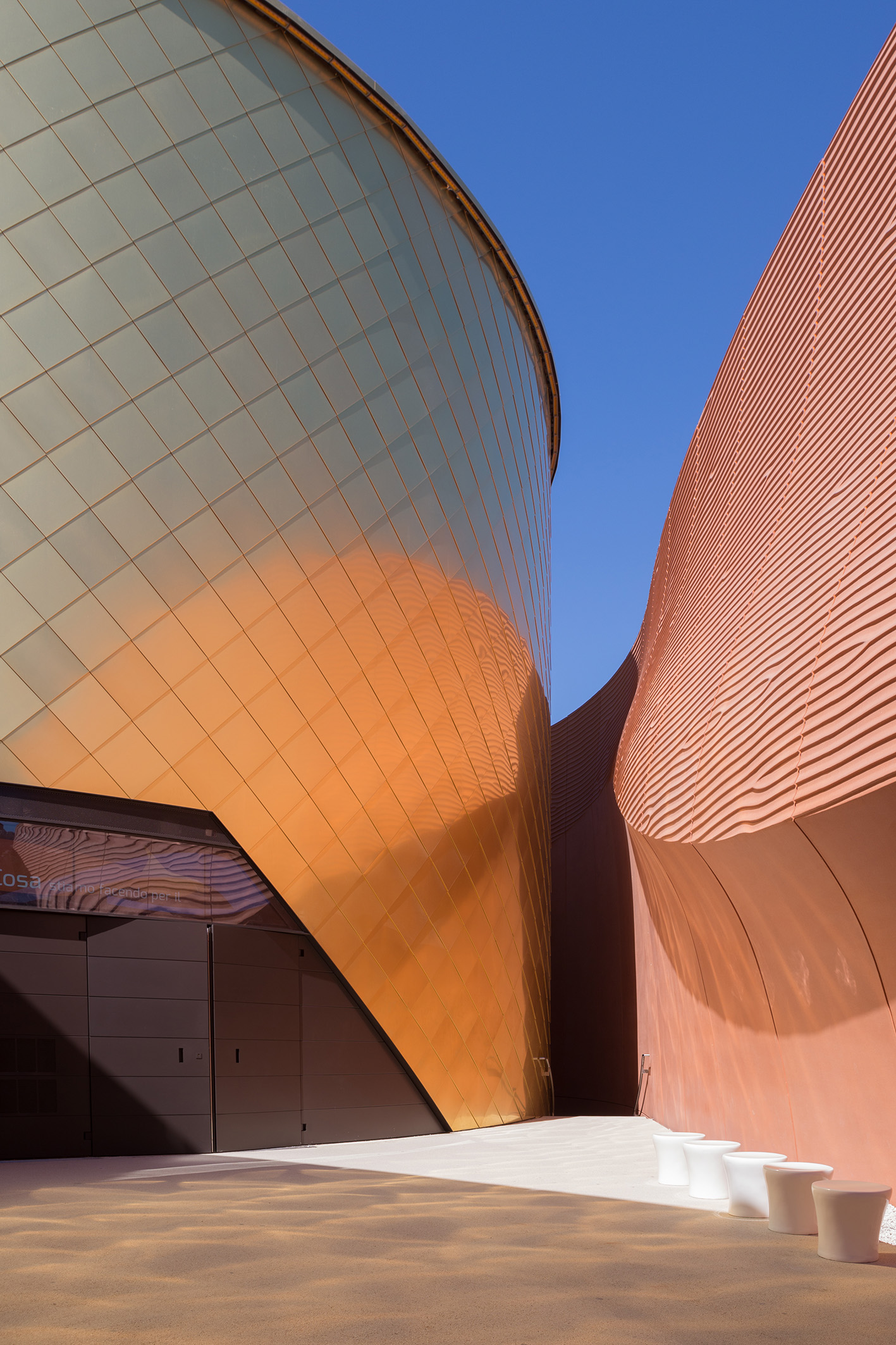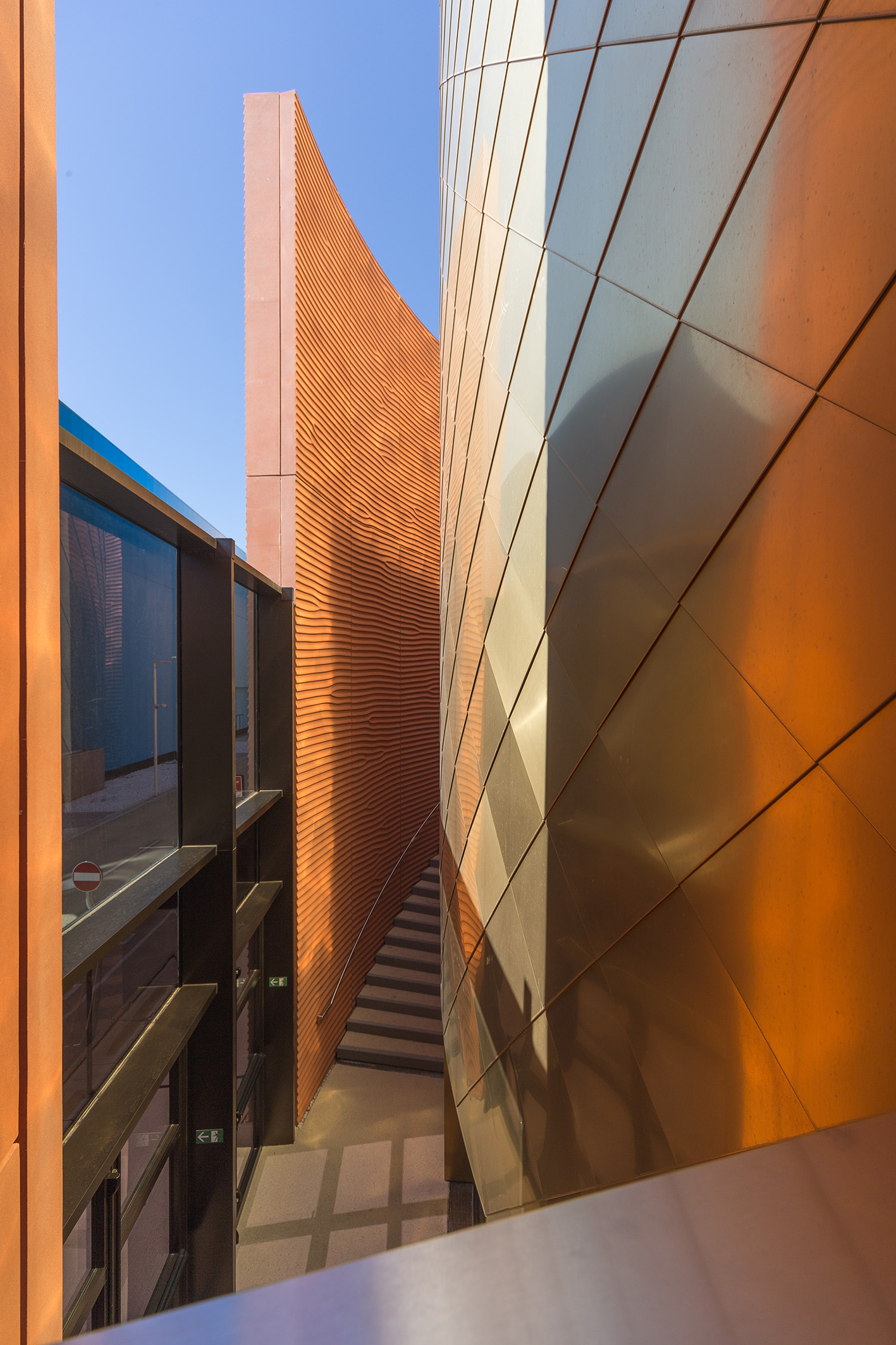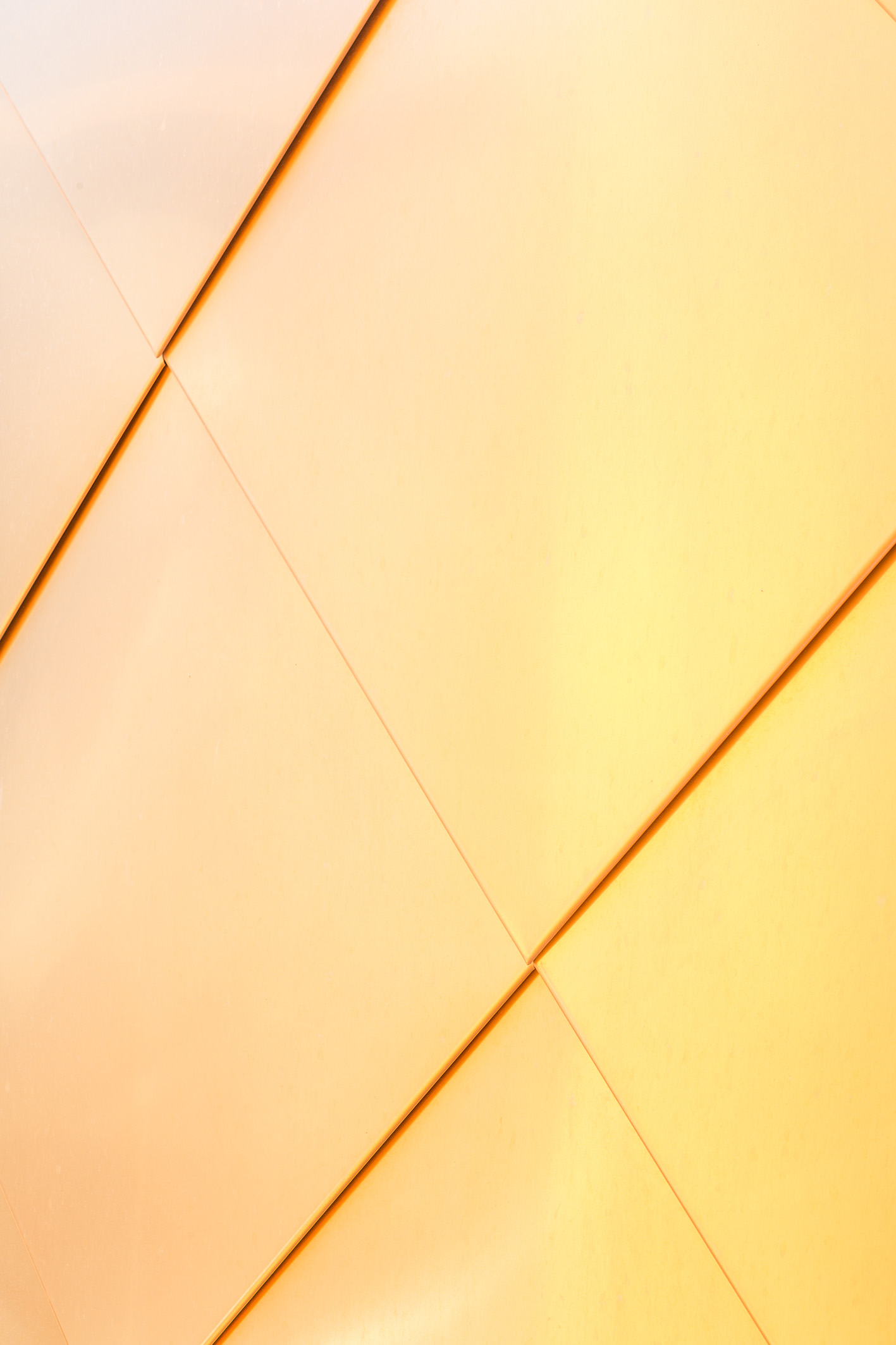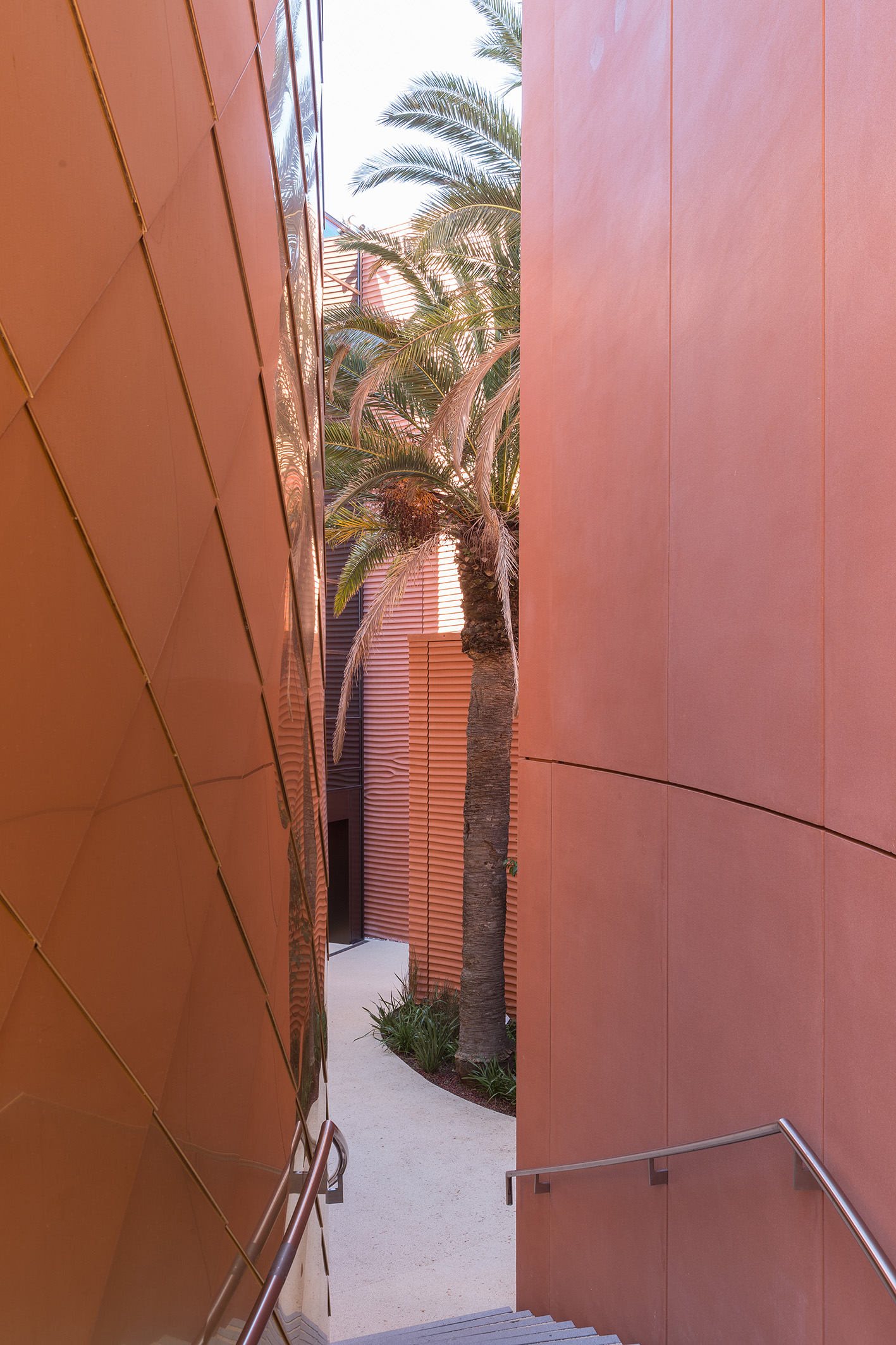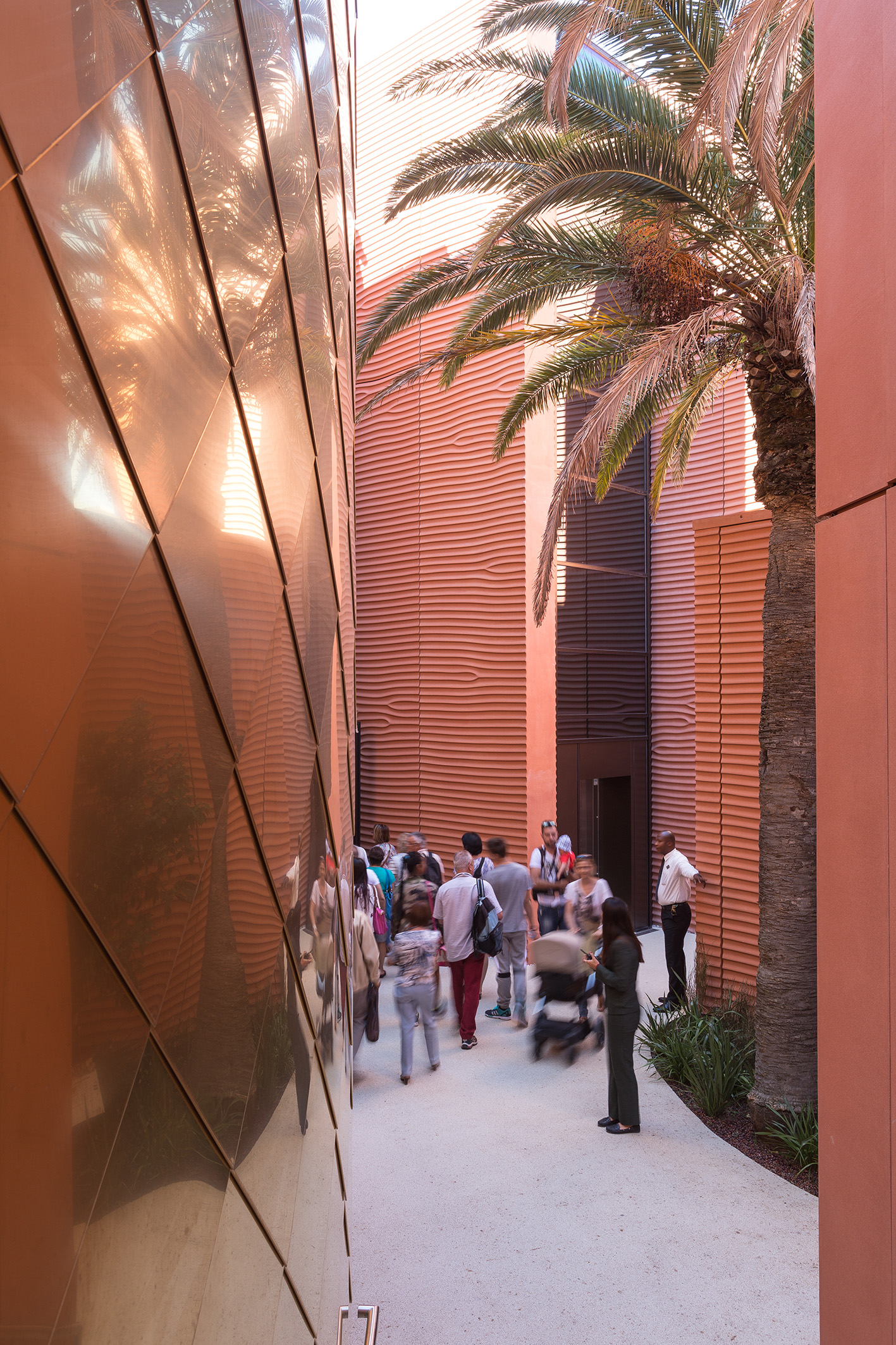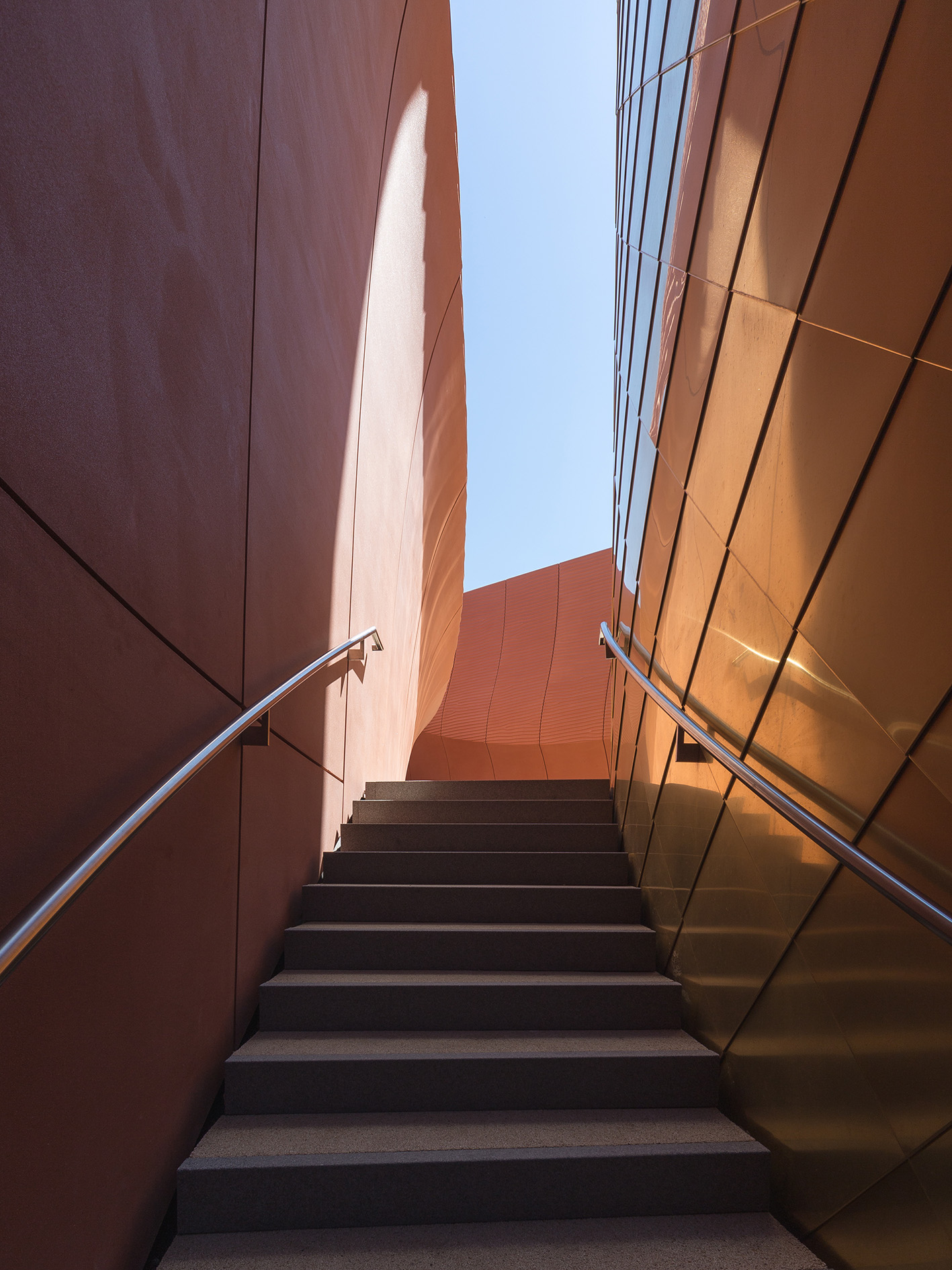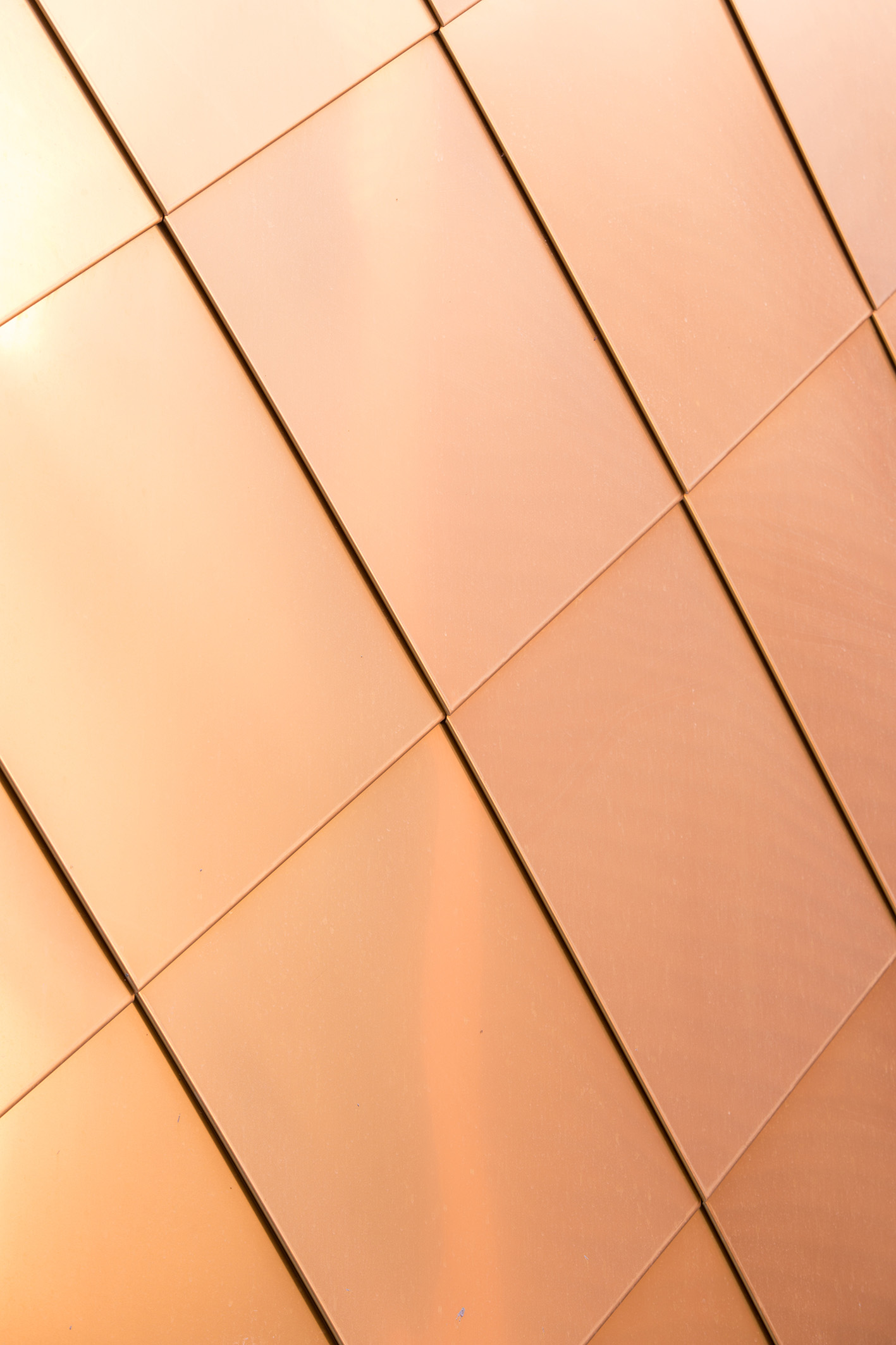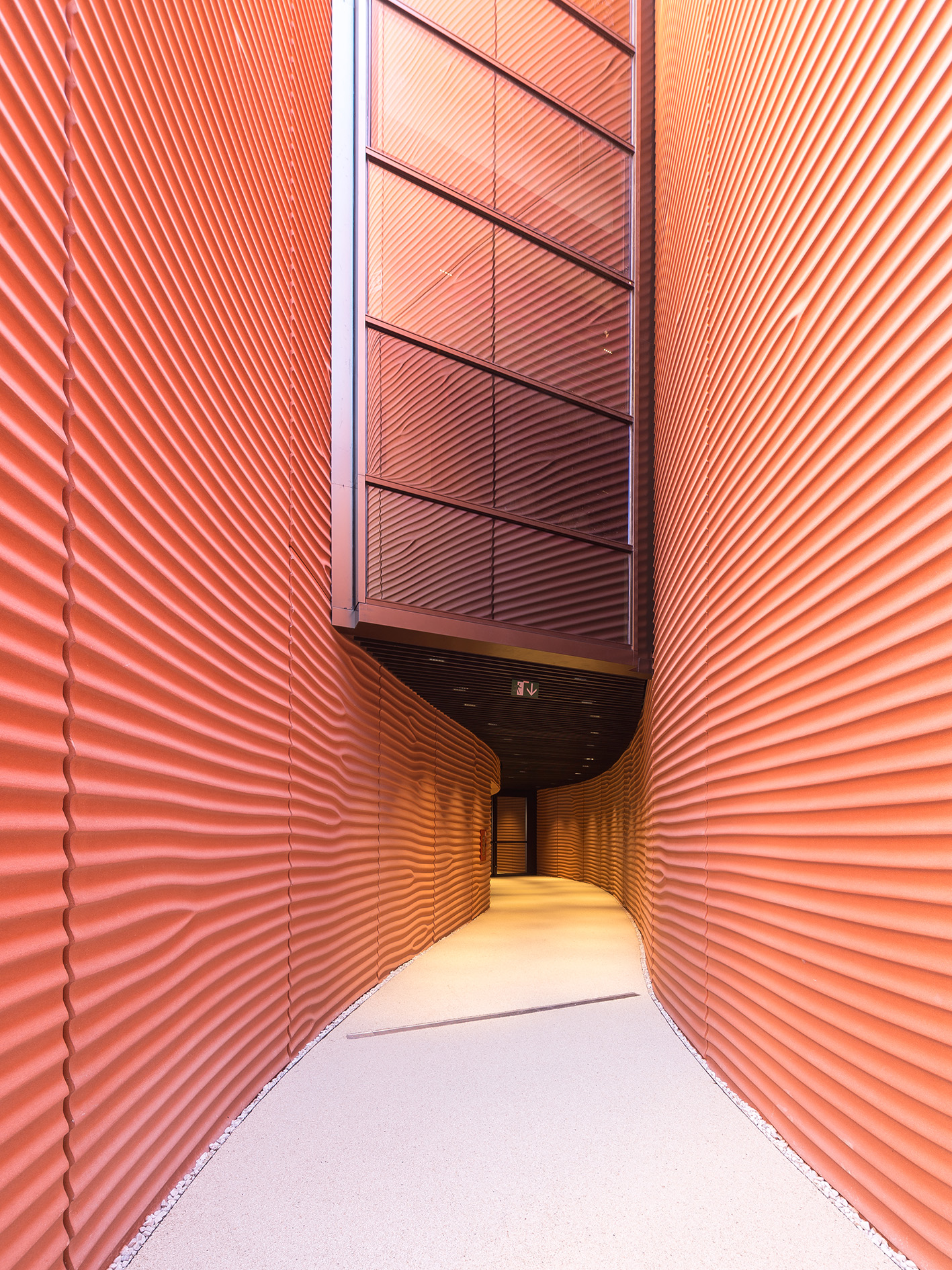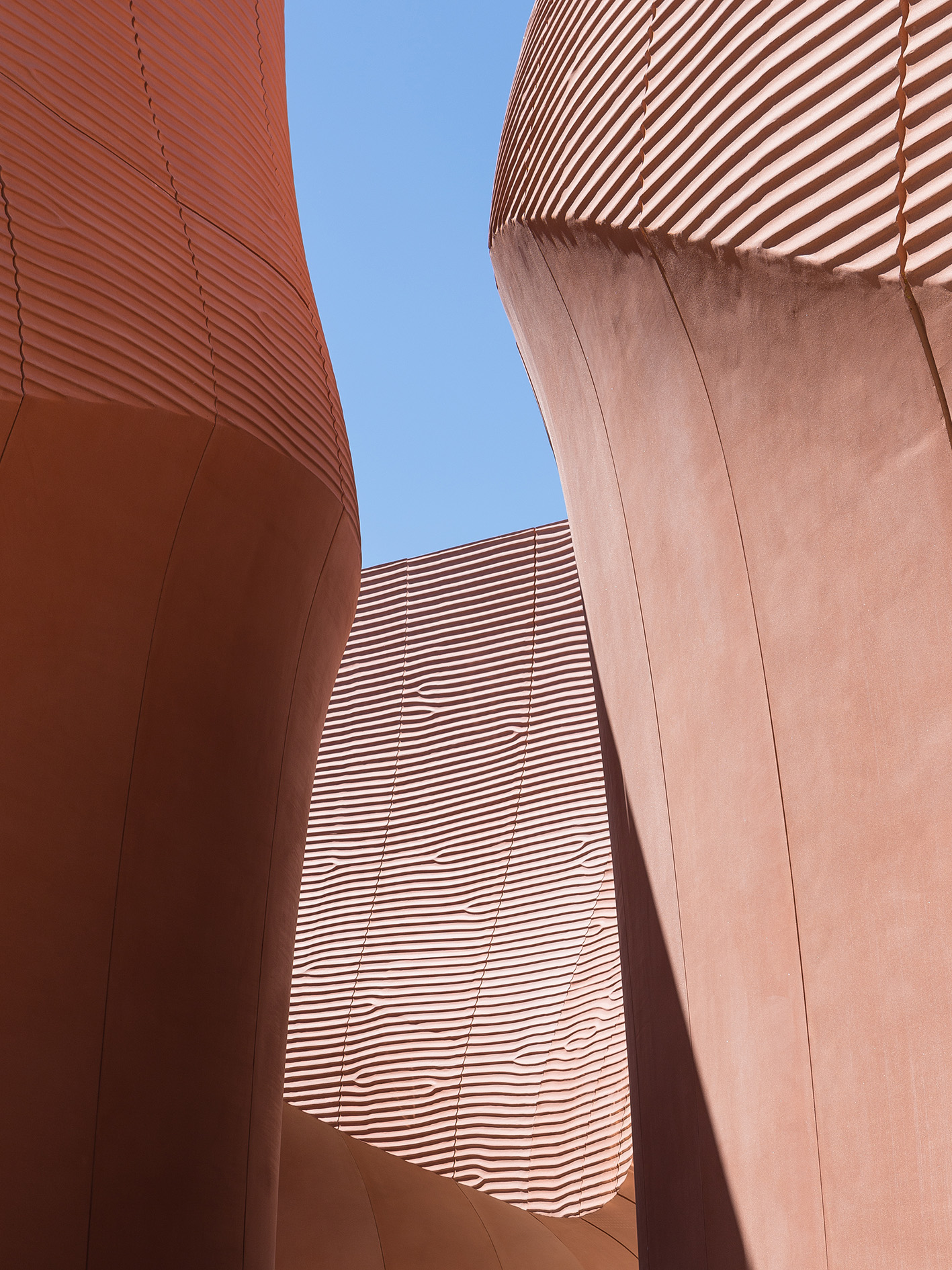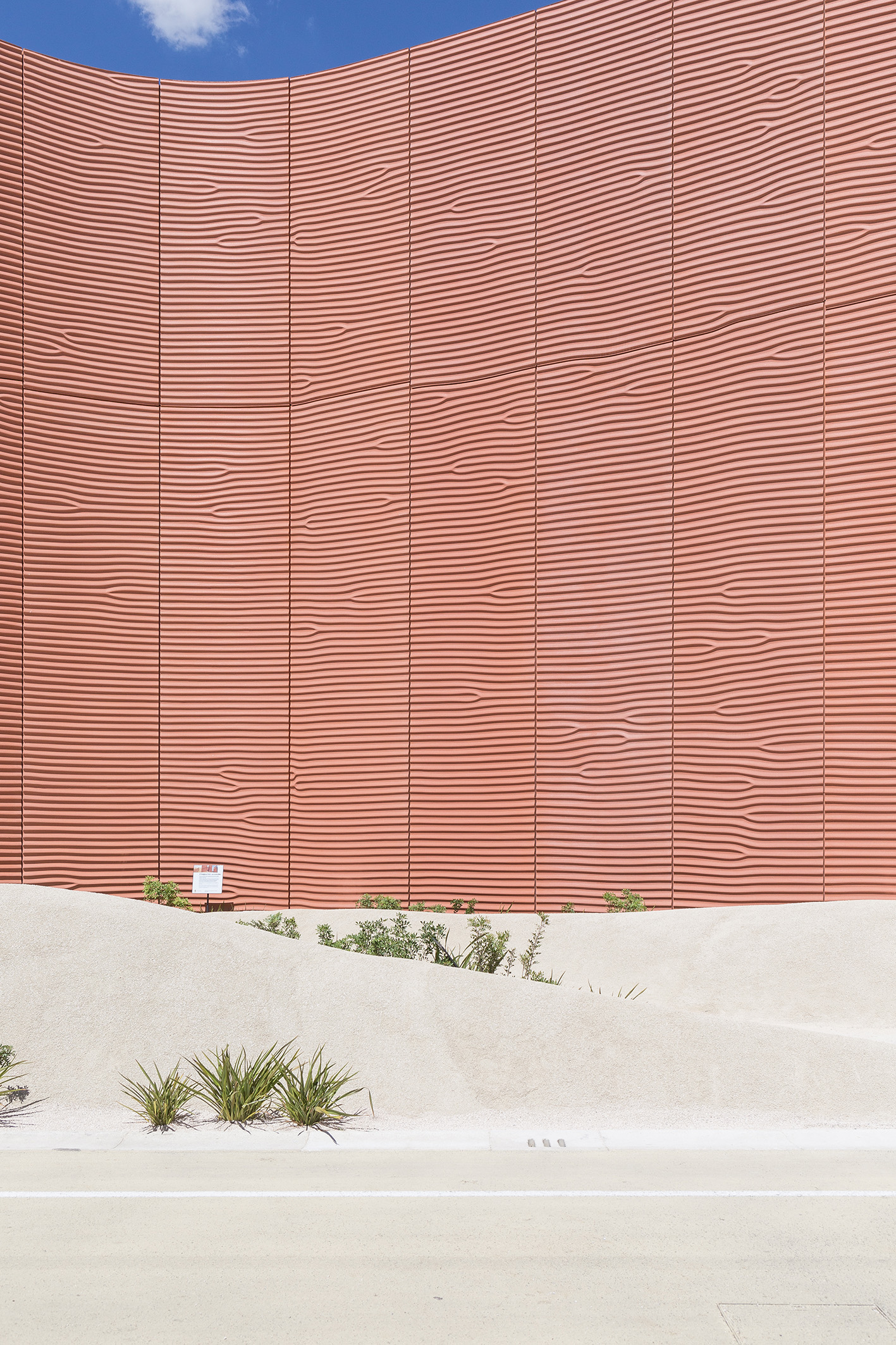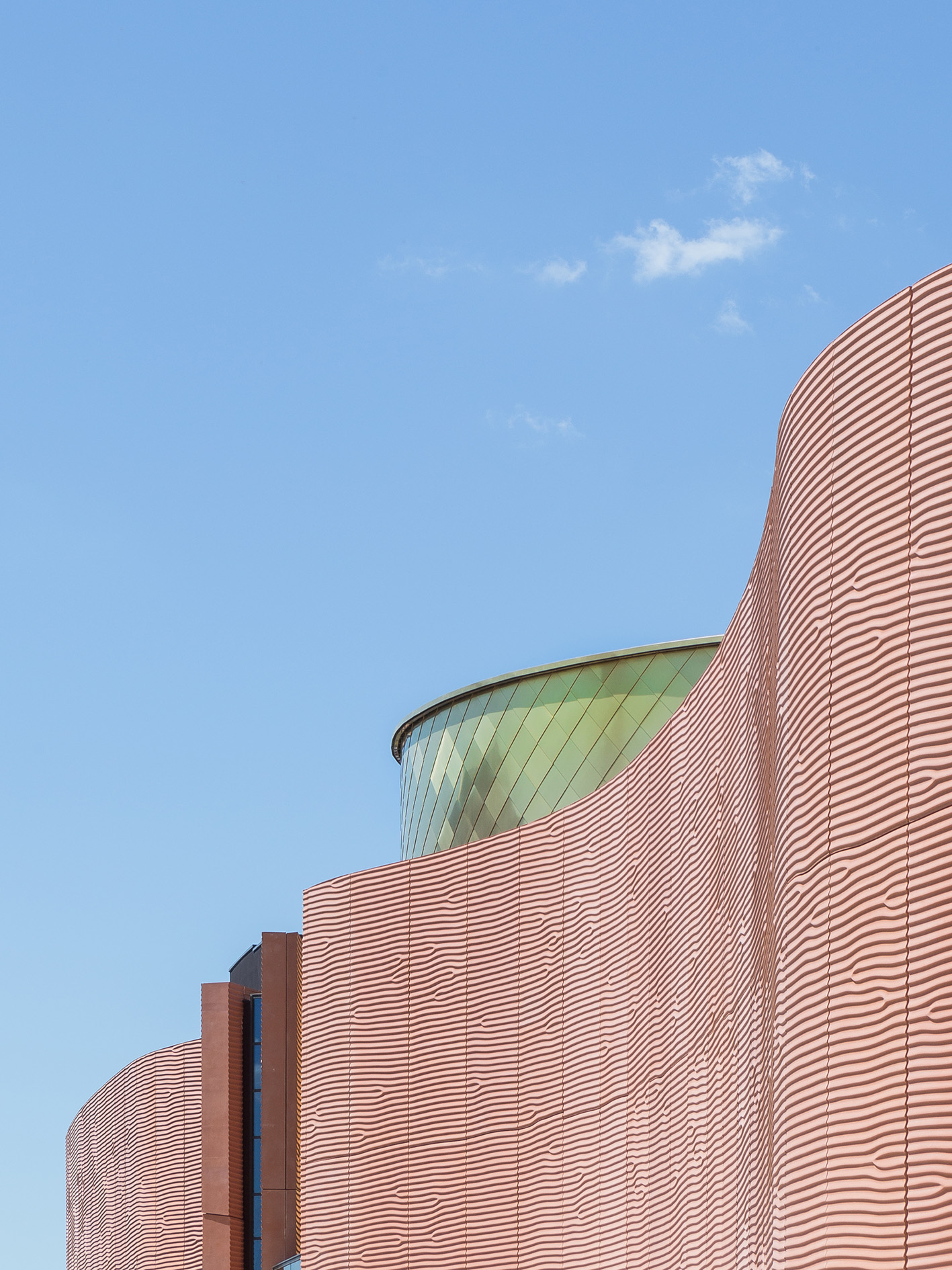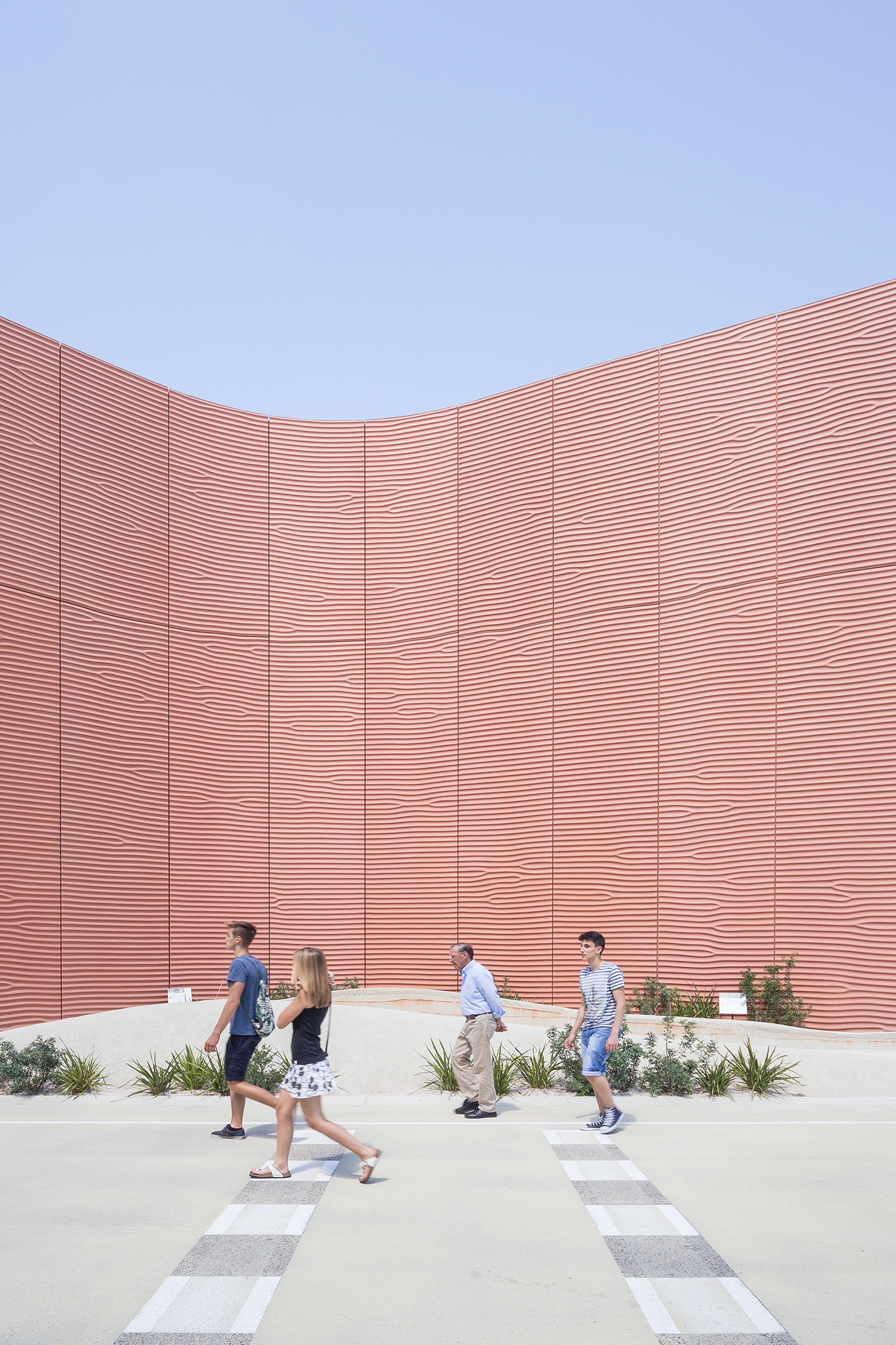9 October 2015
Foster + Partners’ pavilion was one of the most eagerly awaited at Expo Milan 2015 owing to the publicity given to the spectacular nature of the design, inspired by the dunes of the Arabian desert. And in fact the seven monumental 12-meter-high undulating walls that enclose the site, which covers 4400 square meters and is laid out on three levels, have proved a powerful attraction. Visitors form long lines to enter the shady streets and courtyards of a citadel inspired by the principles of construction of ancient Arab communities and by the contemporary version of them that the same London-based studio has produced with the master plan of Masdar City, the model settlement that will be built near Abu Dhabi by 2020. The scenic effect of the great dunes conceals the real strength of the design, which lies in the work on structure and in the respect for principles of sustainable energy. The pavilion has a steel framework that supports panels of glass-fiber reinforced concrete, a solution that will allow it to be dismantled at the end of the event and reconstructed in Abu Dhabi, the location of Expo 2020 (after the “specialized” Expo of 2017 that will be held in Kazakhstan). In the choice of construction materials for the whole of the structure priority was given to locally sourced recyclable ones. A system for the storage and treatment of waste produced over the site’s lifetime was prepared as well, while the configuration of the space provides shade and cool in a natural way and the collection of the runoff from rain minimizes the consumption of water. These measures, together with the use of solar panels to generate electricity, have earned LEED Platinum certification for Foster + Partners’ design. The content is as interesting as the container since it tackles the theme of the Expo in its most profound sense, the systemic one, trying to answer the questions of how to construct a sustainable future and guarantee a healthy diet for the whole of humanity. The solutions are presented in a series of augmented reality displays along the ramp that connects the entrance and the auditorium. It is the history of the United Arab Emirates—a dynamic country with a rapidly growing population, not much cultivable land, a lot of oil and little water—that provides the “work material.” In fact global warming and population growth are presenting many countries with the same difficulties as the Emirates have always faced: a film in perhaps overly bombastic tones makes this clear in the Palm Cinema at the center of the pavilion. The tour ends in a relaxing grove of palm trees and an exhibition that offers a foretaste of the Expo in Abu Dhabi.
